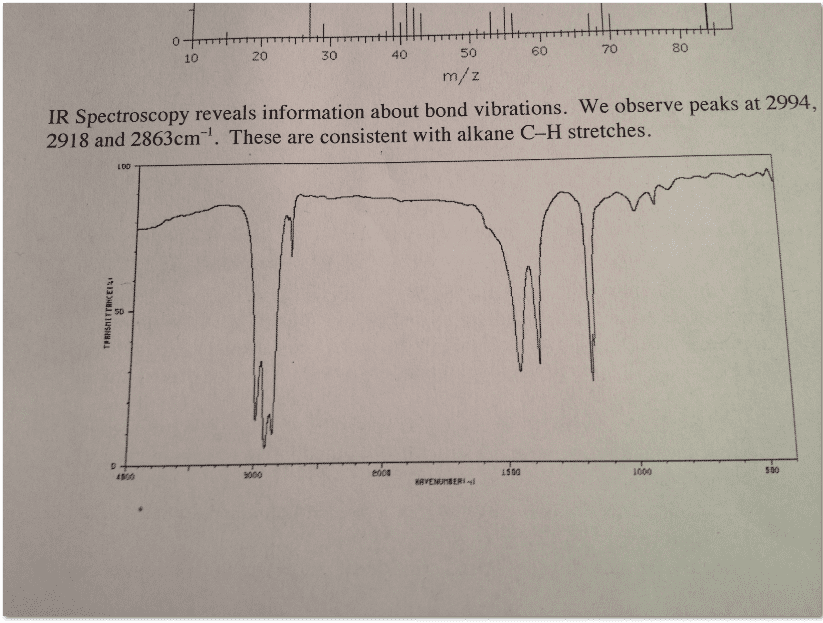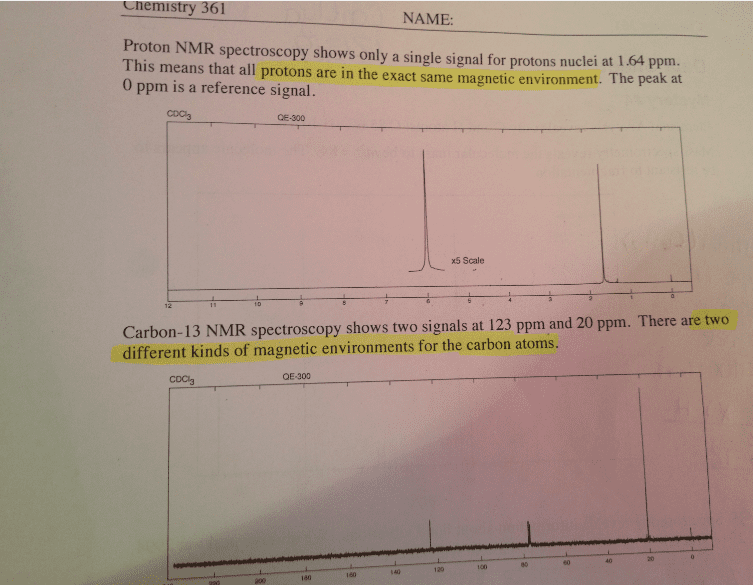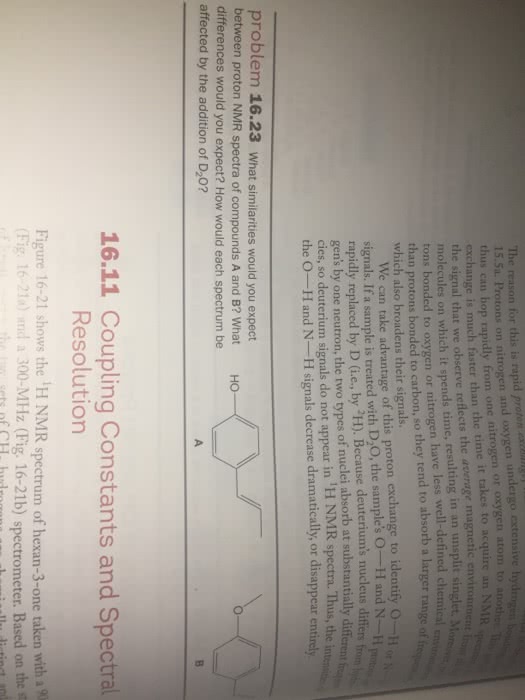CHE 331 Chapter Notes - Chapter 9: Carbon-13 Nuclear Magnetic Resonance, Topicity, Chemical Shift
Document Summary
Chapter 9: nuclear magnetic resonance and mass spectrometry. Local magnetic fields generated by electrons elsewhere in the molecule. It is signal area (integration), not signal height, that is important. That"s how many splits there should be in a signal: the typical coupling we observe is from nonequivalent, vicinal hydrogens (hydrogens on adjacent carbons, separated by three bonds from the hydrogens producing the signal). Coupling can also occur between nonequivalent geminal hydrogens (hydrogens bonded to the same carbon) if the geminal hydrogens are in a chiral or conformationally restricted molecule. 1,4-dimethylbenzene example: integral step heights are 1. 0 and 1. 5. True number of hydrogens are 4 and 6. N = 0 for the h(cid:455)d(cid:396)oge(cid:374)s o(cid:374) the (cid:272)a(cid:396)(cid:271)o(cid:374)s adja(cid:272)e(cid:374)t to the (cid:373)eth(cid:455)l g(cid:396)oups at (cid:1011). (cid:1004) a(cid:374)d (cid:1006). (cid:1007). The(cid:396)e a(cid:396)e (cid:374)o h(cid:455)d(cid:396)oge(cid:374) ato(cid:373)s o(cid:374) the (cid:272)a(cid:396)(cid:271)o(cid:374)s adja(cid:272)e(cid:374)t to the (cid:373)eth(cid:455)l g(cid:396)oups; he(cid:374)(cid:272)e (cid:374) = (cid:1004) fo(cid:396) the sig(cid:374)al at (cid:1006). (cid:1007), a(cid:374)d the sig(cid:374)al is a si(cid:374)glet.





